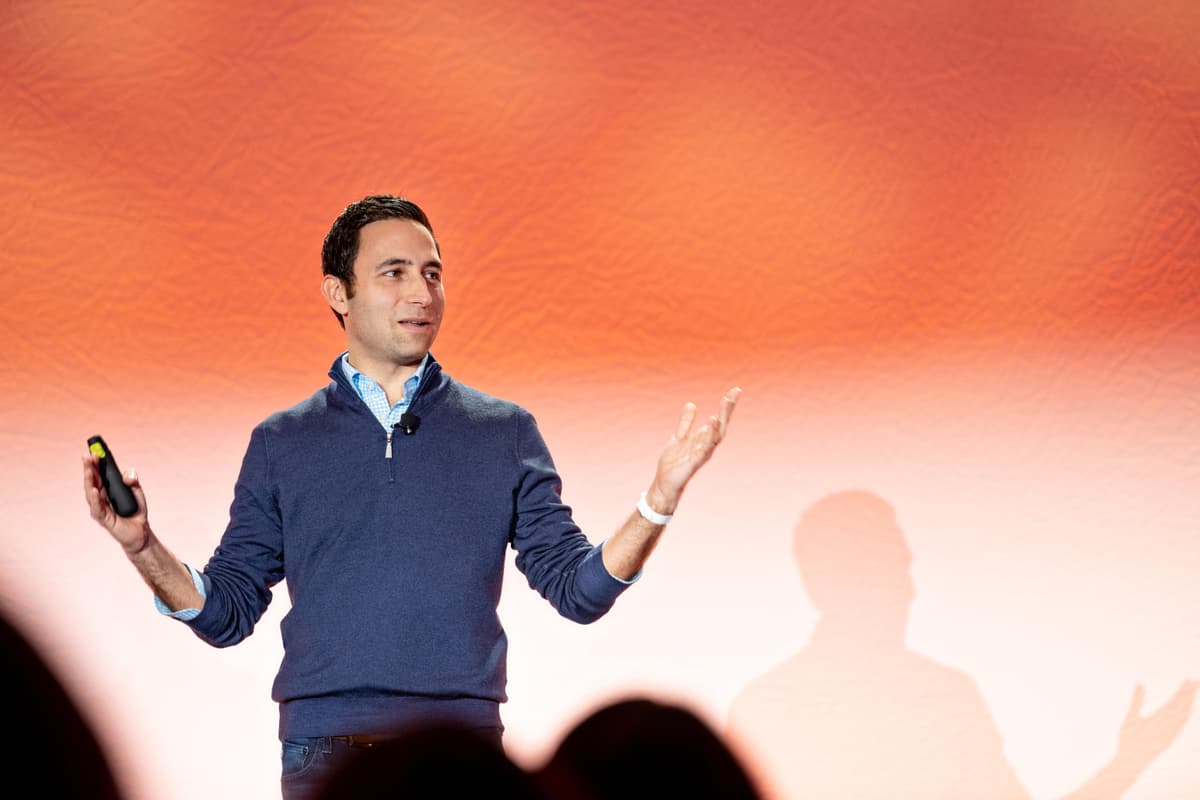
Marketing Leader Series: Scott Belsky, Adobe’s Chief Product Officer, on Navigating the Messy Middle
Scott Belsky’s resume is as impressive as it is diverse. From design to entrepreneurship, from being an investor to being deep in product teams, it seems he’s done it all. During our interview, Scott shares a bit about his professional journey, navigating large companies, and brining new ideas to life.
What happened in your career early on that led to where you are now?
As an undergrad in college, I studied both design and business. I was always torn between two very distinct paths. Back then there was actually very little overlap between design and business. One of my earliest jobs was with Goldman Sachs, working on a team for organizational improvement. In that job, I started using design again. I got a copy of Adobe Illustrator on day three or four in that job, and started to use it to make visual representations of things we were trying to do. I made what was called a leadership compass for Hank Paulson, who was the CEO at the time, to go through with partners. Again, I came back to this idea of design being used to make organizations better, to make people more productive. It was a bit of a wild idea at the time, but of course now, I feel like one is a competitive advantage for the other.
What experiences, or insights, do you find yourself drawing from most based on your previous experiences with entrepreneurial organizations that have allowed you make a difference at Adobe, an organization with over 15,000 employees?
The tension in a large business is always between two forces. Process and alignment. More people join the team and more functions are working together. It’s tempting to install process to get people to do what they're supposed to be doing. Of course, the ultimate answer is to not have process but to just have everyone be extraordinarily aligned. For startups, everyone is sitting at the table for every decision and knows why they are there. Process isn’t needed because everyone’s 100% working towards the same North Star and knows what needs to be done to get there.
In a large company, you can never have no process. But you also can't just throw process at every problem. I always try to drive more alignment toward a common vision, which allows us to remove some process, meetings and the cognitive burden that slows everyone down.
Given your role as an investor, you likely get asked this question a lot. What do you believe to be the makeup of a successful business idea?
I look for something that I feel the world needs in some way. More than anything, I look for a team that isn't necessarily driven by their passion for a solution to a problem, but rather driven by their empathy for the customer suffering a problem. This is an important distinction. Most companies are founded by people who get super passionate about something. They go off and try to build it and end up being 30 degrees off of what the customer actually needed. That's why so many great ideas never achieve product market fit where there's natural growth and the product is a perfect fit for their customers.
Let's talk about your book, The Messy Middle, which discusses the in-between stage of taking a project or a new idea from conception to end state. What is it about the middle of that process that people struggle with, and why did you want to focus on that in this book?
In terms of what inspired Behance, I found myself inspired by frustration. This was a frustration with the obsession with starts and finished in the world of entrepreneurship in the media, in basically all walks of business, and art, and everything in between. People love talking about the romanticism of the start. People being called to do something, and risking it all, and whatever else. Then we love covering the acquisitions, the IPOs, the bankruptcies. Any sort of finish or launch. The middle volatility is essentially... it's too dynamic to summarize, and is therefore overlooked. It also tends to be stuff that people want to forget as opposed to remember. No one wants to remember volatility by their own doing. All of the mundane, ambiguous periods of uncertainty and self-doubt. As a result, you block it out.
I found myself guilty of this as well. Behance was a five years of bootstrapping. Two years of entry back to company. Yet, I like to tie it all up with a bow when I recount it. The idea here was to go into many of the leaders and entrepreneurs I admire and ask them about their middles, and figure out the actual questions I should ask to get their middles, distract them. Also, I had to start with myself, which was also hard. Again, I had a hard time adding texture to this period of time. I wanted to forget. Then I wanted to develop a series of tactics, and insights, and prompts that innovators, leaders of bold, creative projects within companies or on their own could turn to. That was the project.
Check out Scott’s new book The Messy Middle which includes great insights, tips, and advice on making it through your next big project.
Subscribe to our blog to get the latest post delivered to your inbox weekly.
Stay connected with Antenna. Follow @Antenna for our take on marketing trends, corporate culture, and current events.
ABOUT ANTENNA
Antenna is a leader in delivering top marketing professionals to corporations of all sizes for project-based consulting, interim leadership assignments, and contract staffing engagements. With headquarters in Minneapolis, Antenna draws from its private community of experienced marketing talent to help clients balance the flexibility and expertise modern marketing organizations demand.
